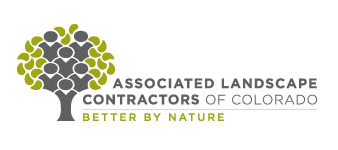|
Friday, May 29, 2015 10:58 AM |
|
BREAKING NEWS: Call for advocacy efforts
National Association of Landscape Professionals (NALP), of which ALCC is a member, issued the following legislative alert in response to the recently released Clean Water Act Rule:
What Is the Clean Water Act (CWA) Rule?
Yesterday, EPA and the US Army Corps of Engineers released the final Clean Water Act Rule: Waters of the United States. The rule is substantially similar to the proposed rule that NALP has been actively opposing since its release early last year. The rule redefines which waters are subject to federal CWA regulation. In the past, only navigable waters were subject to the CWA. Now, in addition to large water bodies, the CWA’s regulatory jurisdiction includes many irrigation ditches, man-made water bodies or areas that have flowing water during heavy storms. The rule defines many ditches as tributaries, which are now subject to regulation. It also subjects to CWA requirements any water body deemed to have a “significant nexus” to a larger body. Under the rule, regulators have a great deal of discretion to determine if a “significant nexus” exists.
What Does the CWA Rule Mean for My Business?
The definitions included in the new rule are confusing and leave some room for interpretation, making it difficult for landscape professionals to know if their clients’ properties contain Waters of the United States. Below are several CWA requirements that landscape professionals may need to consider as they maintain their customers’ property.
- National Pollutant Discharge Elimination System (NPDES) permits are currently required for the application of pesticides to water to control algae, aquatic weeds and mosquitoes. Since the rule extends CWA regulation to some man-made residential community lakes and ponds, NPDES permits could be required for pesticide applications to these waters.
- CWA Section 404 (wetlands dredge and fill) permits could be required to install trees, plants, patios and other landscape features on private property that are deemed to be in a floodplain or include Waters of the United States.
- Total Maximum Daily Loads (TMDLs) are the maximum amount of a pollutant allowed in a given water body. EPA used the TMDL program in the Chesapeake Bay to compel states to set limits on nutrient applications. Smaller water bodies that are now subject to CWA regulation could now face similar requirements.
Further, the CWA allows for citizen action lawsuits that could subject the EPA or individual businesses to litigation.
What Can I Do to Fight These New Requirements?
The rule will take effect in about 60 days. The only way to change the new requirements is through Congressional action. On May 12, the House passed legislation (H.R. 1732) to require the agencies to withdraw the rule and work with stakeholders to develop a new rule. The Senate Environment and Public Works Committee held a hearing on similar legislation (S. 1140) on May 19. The committee is expected to address the legislation further this summer. NALP continues to advocate for these bills.
What can I do?
You can voice your concerns via Twitter using the hashtags #landscapeadvocacy, #4CWAclarity and #ditchtherule.
Whom can I contact?
Tweet at your members of Congress and senators and @EPAWater. See ALCC's list of representatives on Twitter.
What should I say?
NALP suggests using the following tweets:
- Let’s stop the overreach of the EPA. Support S. 1140. #landscapeadvocacy #4CWAClarity #ditchtherule
- Protect landscape professionals from costly new regulation. Support S. 1140. #landscapeadvocacy #4CWAClarity #ditchtherule
- Do I really need a CWA permit to plant a tree? #landscapeadvocacy #4CWAClarity #ditchtherule
Previously on the LAB:
EPA finalizes Clean Water Rule
What is a WOTUS? |



